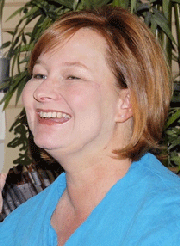With good weather, the sun is visible anywhere which means Baltimore residents should get a decent glimpse of the Great American Solar Eclipse of 2017.
“Some schools, libraries and other places may have special events or eclipse viewing parties where safe viewing equipment will be provided and knowledgeable people will be available to explain what you are seeing,” said Dr. Deborah Levine, a professor of Astronomy at Anne Arundel Community College.
Courtesy Photo/AACC
Dr. Deborah Levine
The professor stressed that as long as an individual knows how to safely view the event, they can see it from any place where the sun might be visible on Monday, August 21, 2017.
In Baltimore, the partial eclipse will begin at 1:18 p.m., and will reach its maximum at 2:48 p.m. It will end at 4:01 p.m.
Levine says times will vary by location as the eclipse will begin at 1:19 p.m. in Annapolis, for example, while in Salem, Oregon, it’ll start at around 9:05 a.m.
The Astronomy Club at Anne Arundel Community College plans an eclipse event at the campus observatory, but other locations could be found using the NASA Eclipse website: www.eclipse2017.nasa.gov/event-locations.
“It’s really critical that people understand they must protect their eyes,” Dr. Levine said. “You need eye protection or some kind of projection system to view the eclipse without risking your eyesight. Regular sunglasses, no matter how dark, are not sufficient.”
“It is even more dangerous to look through binoculars, a camera or a telescope unless you know there is a safe filter in place. If you aren’t sure, don’t look directly at the sun. You can make a projection device by simply making a pin hole in a piece of cardboard and letting the sun fall through it onto the pavement… you will see the sun at first make a circular spot that will gradually become a crescent as the moon begins to block the light,” Dr. Levine pointed out.
Also, it is never safe to look directly at the sun without protection if any portion of it is visible, even during a partial solar eclipse, according to Dr. Levine.
The solar eclipse means that earth’s moon has drawn very nearly exactly in between the sun and the earth so that it blocks the light from the sun for some locations on earth, she said.
Because the shadow of the moon is much smaller than the surface of the earth, the light from the sun is completely blocked only for a small number of locations.
“Baltimore is too far east and north to experience complete blockage of the light from the sun, but near the center of Baltimore, you will see 79.3 percent of the sun’s surface obscured by the moon, which will be a very noticeable event called a partial solar eclipse,” Levine said, noting that NASA has an interactive map that shows the path the shadow will take across the United States.
This event seems important to many because it’s not something that most people get to observe in their lifetime.
Total solar eclipses happen somewhere on earth every couple of years on average— most recently in November 2012, March 2015 and March 2016.
“And, if you are in a location where the eclipse is near its maximum, the sun’s light can be completely blocked for two to three minutes in the middle of the day. It gets dark, the air cools, winds may rise,” Levine said. “I had the opportunity to observe a significant partial eclipse when I was an undergraduate in college. I remember that there was a rooster nearby and the bird got pretty upset, not knowing if he should crow, or not crow.”
The rooster did not know it was just the moon and earth obeying the laws of gravity and following the well-established pattern of their orbits, Levine added.
For more detailed technical information about the eclipse or for information about how to view the event safely, visit NASA’s Solar Eclipse website: www.eclipse.aas.org/eye-safety.

